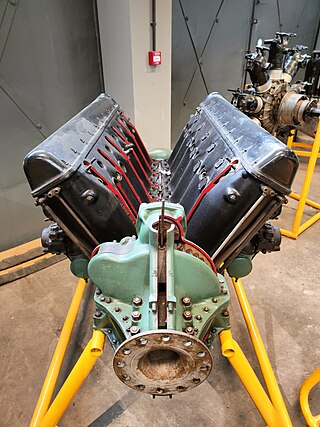Top Qs
Timeline
Chat
Perspective
Hispano-Suiza 12X
French aircraft component From Wikipedia, the free encyclopedia
Remove ads
The Hispano-Suiza 12X was an aircraft piston engine designed in France by Hispano-Suiza during the early 1930s. A 12-cylinder Vee, liquid-cooled design, the 12X was used on several aircraft types, some of them being used in limited numbers during World War II. Due to the 12X's limited power output, its derivative the more powerful Hispano-Suiza 12Y had a longer career.
Remove ads
Variants
Summarize
Perspective
Tabulated data from: Lage, 2004[1]
- Hispano-Suiza 12Xrs
Remove ads
Applications
Specifications (12Xcrs)
Data from [2]
General characteristics
- Type: Twelve-cylinder supercharged liquid-cooled 60° Vee piston engine
- Bore: 130 mm (5.12 in)
- Stroke: 170 mm (6.69 in)
- Displacement: 27 L (1,648 in³)
- Length: 1,577 mm (62.09 in)
- Width: 726 mm (28.58 in)
- Height: 904 mm (35.59 in)
- Dry weight: 380 kg (838 lb)
Components
- Valvetrain: Overhead camshaft with two valves per cylinder
- Supercharger: Single-speed centrifugal type supercharger, 10:1 reduction
- Fuel system: Six Solex carburetors
- Fuel type: 85 octane rating gasoline
- Cooling system: Liquid-cooled
- Reduction gear: Spur, 2:3
Performance
- Power output:
- 486 kW (651 hp) at 2,600 rpm for takeoff
- 508 kW (681 hp) at 2,600 rpm at 4,500 m (14,765 ft)
- Specific power: 18.81 kW/L (0.41 hp/in³)
- Compression ratio: 5.8:1
- Specific fuel consumption: 328 g/(kW•h) (0.54 lb/(hp•h))
- Oil consumption: 11 g/(kW•h) (0.28 oz/(hp•h))
- Power-to-weight ratio: 1.34 kW/kg (0.81 hp/lb)
See also
Comparable engines
Related lists
References
Wikiwand - on
Seamless Wikipedia browsing. On steroids.
Remove ads

